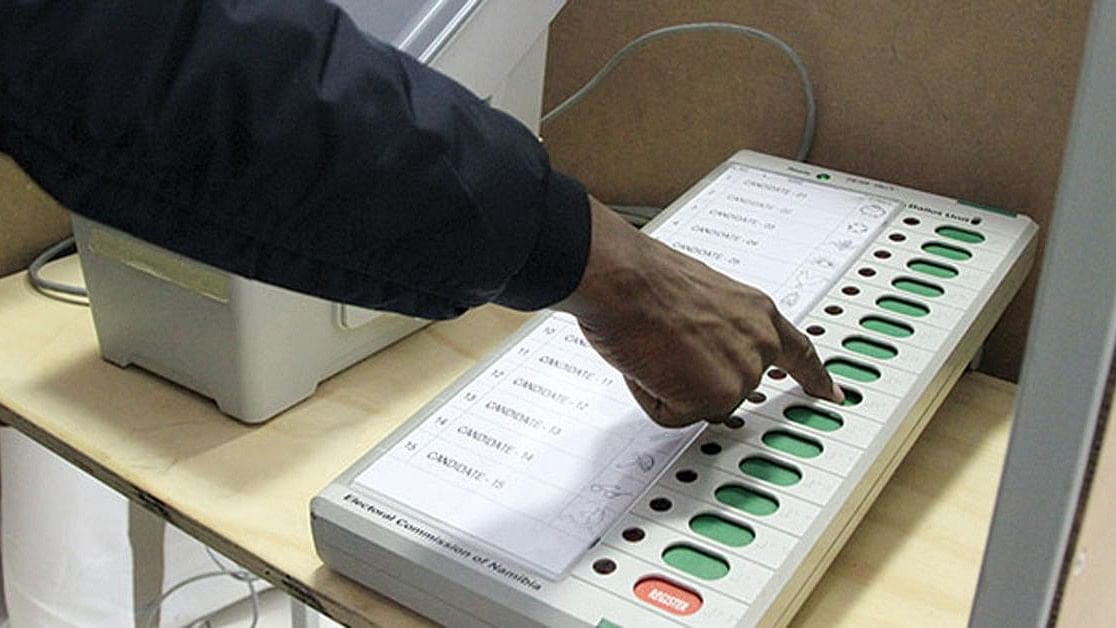
Representative image of a person voting through EVM.
Credit: DH Photo
India, being the largest democracy, holds the Lok Sabha elections every five years to decide its Central government.
Managing the voting and counting process is a mammoth exercise as the system and procedure have to be foolproof and fair so that no political party can subvert the system for its advantage.
Since 2004, the Election Commission of India (ECI) has been using Electronic Voting Machines (EVMs) in all national and assembly elections, leaving behind paper ballots for carrying out smooth elections and declare results.
The Counting Process:
Date and place of counting: The ECI announces the date of counting while issuing the notification announcing the beginning of the electoral process.
In the case of Lok Sabha elections, there can be several places where the counting of votes for a particular constituency can be conducted.
However, the EC prefers that the counting should be done under the direct supervision of the Returning Officer, which is possible only at one place.
Who counts votes in an election? A Returning Officer (RO) is responsible for conducting elections in a constituency, and the responsibility of counting votes also falls on them.
The RO is typically an official with the government or a local authority nominated by the ECI for each constituency in consultation with the state government.
Time for starting the counting process: The official time for starting the counting process is fixed at 8 am. However, poll officials and counting agents appointed by the political parties and candidates reach the counting centres before 5 am to be briefed and take their places at counting tables by 6 am.
The vote counting: The RO takes a call on the location where the votes will be counted for a particular constituency.
Under the direct supervision of the RO, the vote counting is carried out.
However, in certain situations where counting takes place at multiple locations for a constituency, counting may also take place under the supervision of an Assistant Returning Officer (ARO).
The counting of votes for a constituency typically takes place within a single hall. In each round of counting, votes from 14 EVMs are counted.
The number of counting halls and tables where counting takes place may be increased with prior permission from the ECI if needed.
The vote counting process: The RO appoints counting supervisors using a three-stage process. Candidates, along with their counting agents and election agents, are present in the counting hall.
The counting process begins with the tallying of electronically transmitted postal ballots under the direct supervision of the RO.
Once the postal ballot counting begins, the counting of votes on EVMs also begins within 30 minutes. After the end of each round of counting, the results collected from the tallying of votes from the 14 EVMs are announced.
VVPAT, VVPAT slips and how they work: VVPAT, which stands for Voter Verifiable Paper Audit Trail, is a system that prints a paper slip when a vote is cast, showing the name of the candidate, serial number, and the symbol of the party.
The VVPAT machine also has a transparent window where a voter can see the printed slip that contains the name and symbol of the party they have voted for, for about 7 seconds.
The VVPAT machine essentially acts as a verification machine for voters to ensure that their vote has been recorded for their intended candidate.
The slips stored in a VVPAT machine can be used to corroborate the results of the EVM.
If there are any allegations of vote fraud or miscalculation, the EC can direct for the slips to be counted.
The Supreme Court, in 2019, had directed the EC to increase the VVPAT verification to five random EVMs in each constituency ahead of the Lok Sabha elections.
However, EVMs and VVPATs are separate entities and are not connected to any network. The EC has always maintained that both systems are fail-safe methods.
The VVPAT machine was first introduced in India in the 2014 general elections.
The final result for a constituency is announced only after the VVPAT verification process has been completed.